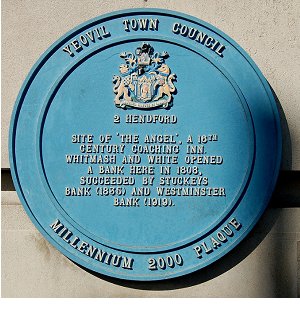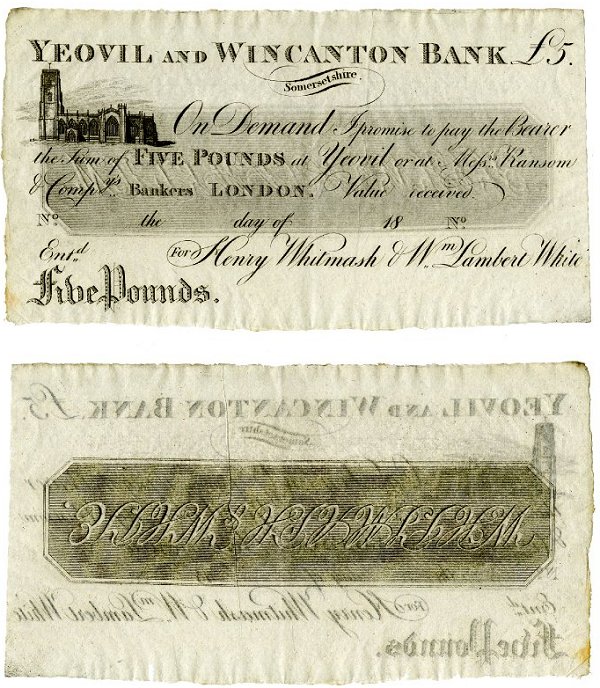whitmash & white's bank
Whitmash & white's bank
Hendford
 Before
joint stock
banks were
permitted
outside London
by the Act of
1826, the
financial needs
of local
businessmen were
met by private
country banks,
which provided
safe custody for
deposits of
gold, issued
banknotes and
honoured cheques.
Before
joint stock
banks were
permitted
outside London
by the Act of
1826, the
financial needs
of local
businessmen were
met by private
country banks,
which provided
safe custody for
deposits of
gold, issued
banknotes and
honoured cheques.
This private bank was established as Henry Whitmash & Richard Brown in Wincanton in about 1796. Henry George Whitmash was a Yeovil coachbuilder and glover. It was known as Whitmash & Co by 1805, Whitmash & White by 1811 and Henry Whitmash & William Lambert White by 1813.
Henry Whitmash was a Yeovil coachbuilder and William Lambert White was a solicitor in Yeovil. Both Whitmash and White served as Churchwardens and trustees of Woborn's Almshouse, and both became Town Commissioners in 1830, the latter acting as treasurer until his death in 1845.
In 1808 the bank opened a branch in Yeovil and from then it was also known as the Yeovil & Wincanton Bank. This was in a building adjoining the old Angel Inn.
The Wincanton business appears to have closed in 1818. In 1835 the bank was acquired by Stuckey's Banking Co, but the trading name was retained until 1837. Banknotes were printed in £1, £5, and £20 denominations, but only the £1 and £5 notes are known to have been issued.
GALLERY

©
Trustees of
the British
Museum
The obverse and reverse of a five pound note of the Yeovil & Wincanton Bank featuring a drawing of St John's church. From the period 1808 to 1835, at which time £5 would be worth in excess of £300 at today's value. Notes were printed in £1, £5, and £20 denominations, but only the £1 and £5 notes are known to have been issued.
